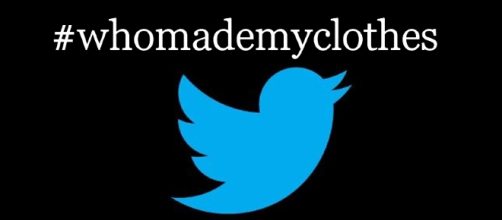During a modern-day morning ritual of scrolling through my Instagram feed in bed with one eye open on the phone and the other half consciously contemplating breakfast cereal choices, a series of trending #whomademyclothes hashtags abruptly woke me, like a highly charged adrenaline shot of morals.
Various visual posts paid homage to ‘Fashion Revolution Week’ and the ‘Rana Plaza’, and after some intense investigative Google action, I came to discover that April’s Fashion Revolution week marked the fifth anniversary of the tragic Bangladesh Rana Plaza factory collapse.
This catastrophic event in 2013 not only shattered over 3,000 lives but also a significant amount of trust between consumers and fashion brands. Many renowned global retail names were exposed on an epic scale for slave labour and their unethical treatment of supply chain staff. When the dust and debris from this unspoken smoke screen finally settled it revealed that cheap fast fashion had a high price to pay to humanity.
#whomademyclothes trends across social media
Consumers have utilised the internet and backed retailers into a corner across social media channels and demanded transparency in clothing production cycles. As a result, Corporate Social Responsibility policies and audit practices have been boldly brought to the forefront and broadcast to the masses.
As a former fashion student, I feel slightly ignorant to not have heard of this radical revolution. Royal weddings, babies, and the usual reality star sagas have filled online news sites with no reference (that I’ve seen) to a Fashion Revolution week.
Surely with the earth being stretched of resources and the fashion industry producing tonnes of landfill waste, it’s time for us to start speaking about protecting lives and the planet.
Former fashion designers kicked off the conversation
Former fashion designers Carry Somers and Orsola de Castro have kicked off the conversation through their formation of the Fashion Revolution. Founded in 2013, the pair wanted answers to the Rana Plaza aftermath. Over 70,000 people have asked #whomademyclothes and the hashtag has had 156 million impressions online.
The savvy social media influencers have engaged with their audience by questioning the model, material, and mindset of fashion. The activists have addressed politicians with a Fashion Question Time held at the Houses of Parliament. Another achievement is their social and environmental Transparency Index which has resulted in over 40 international fashion brands pledging themselves to clearer communication.
Keen to revolt commercialism and be a part of this social and sustainable riot? The Fashion Revolution can be found on Twitter, Pinterest, Facebook, and Instagram.


